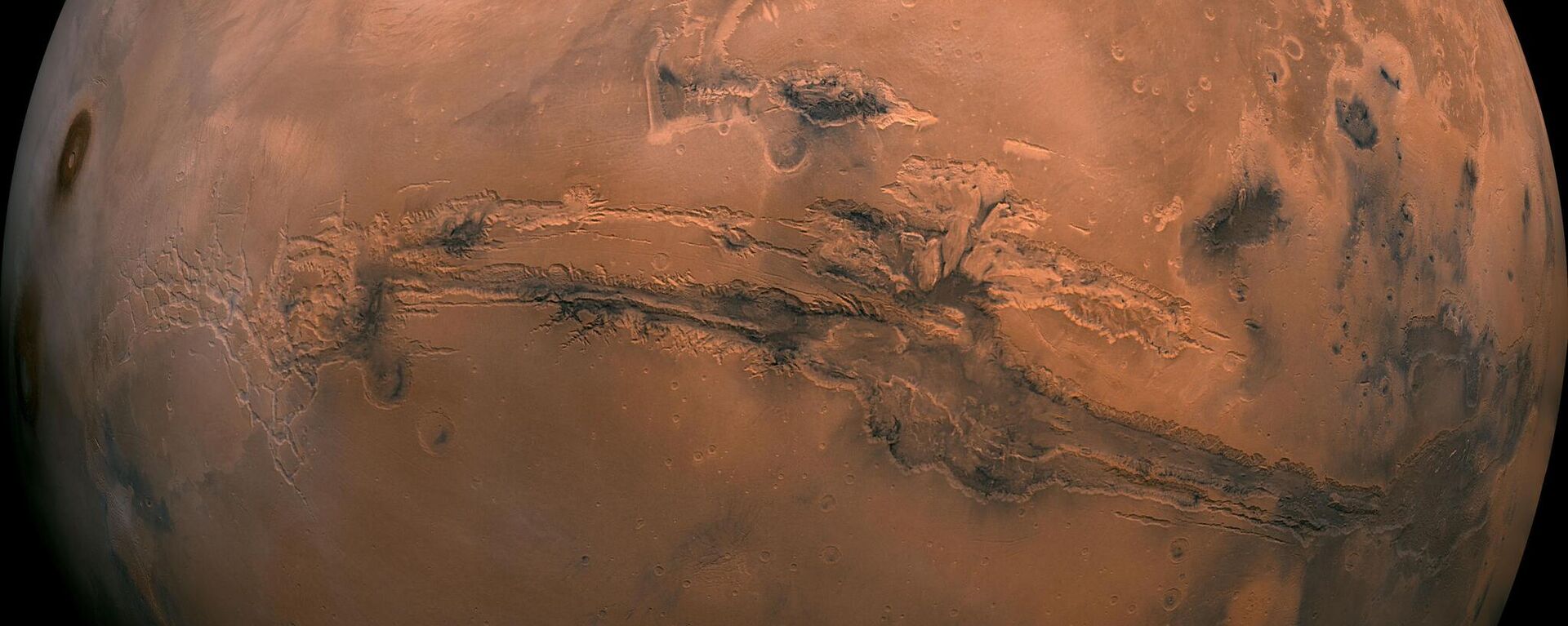https://sputnikglobe.com/20230607/gravitational-waves-may-be-generated-from-debris-fields-around-dying-stars---study-1110969123.html
Gravitational Waves May Be Generated From Debris Fields Around Dying Stars - Study
Gravitational Waves May Be Generated From Debris Fields Around Dying Stars - Study
Sputnik International
Northwestern University researchers now propose exploring a previously unexplored avenue—the turbulent cocoons of debris that surround dying massive stars.
2023-06-07T02:29+0000
2023-06-07T02:29+0000
2023-06-20T17:11+0000
beyond politics
science & tech
northwestern university
american astronomical society
laser interferometer gravitational-wave observatory (ligo)
space
black hole
space exploration
https://cdn1.img.sputnikglobe.com/img/07e7/06/07/1110968874_250:0:3891:2048_1920x0_80_0_0_9702caa421bd85fbc98ed522d4307c49.jpg
Using state-of-the-art simulations, researchers have demonstrated for the first time that these so-called debris "cocoons" can emit detectable gravitational waves. Unlike gamma-ray burst jets, the gravitational waves emitted by a debris field are expected to fall within the frequency band detectable by the Laser Interferometer Gravitational-Wave Observatory (LIGO).Ore Gottlieb, CIERA fellow at Northwestern’s Center for Interdisciplinary Exploration and Research in Astrophysics, who led the study at Northwestern, stated: "Cocoons are one of the first places we should look to for this type of source."Gottlieb presented the research during a virtual briefing at the 242nd meeting of the American Astronomical Society, where he emphasized the significance of these findings for the detection of non-binary sources of gravitational waves.The simulations conducted by Gottlieb and his team aimed to model the collapse of massive stars into black holes, studying the resulting outflows or jets of particles. Initially, the focus was on whether the accretion disk surrounding the black hole could emit detectable gravitational waves. However, the researchers stumbled upon an unexpected revelation.These cocoons form as the jets collide with the collapsing layers of the dying star, resulting in a bubble of turbulent and energetic debris. As this bubble accelerates away from the jet, it perturbs space-time, creating a ripple of gravitational waves.Gottlieb stressed that if cocoons do generate gravitational waves, LIGO should be capable of detecting them during its upcoming runs. While researchers have primarily searched for single-source gravitational waves from events like gamma-ray bursts or supernovae, those have posed challenges for LIGO detection due to their spherical and symmetrical nature. In contrast, cocoons offer an asymmetrical and highly energetic alternative.By studying these cocoons, scientists could gain valuable insights into the inner workings of stars, the characteristics of jets, and their prevalence in stellar explosions.The results of study is available through arXiv preprint service.
https://sputnikglobe.com/20230603/esa-livestreams-images-from-mars-in-historic-first--1110869150.html
https://sputnikglobe.com/20230527/astronomers-detect-betelgeuse-star-acting-strange---again-1110622191.html
Sputnik International
feedback@sputniknews.com
+74956456601
MIA „Rossiya Segodnya“
2023
News
en_EN
Sputnik International
feedback@sputniknews.com
+74956456601
MIA „Rossiya Segodnya“
Sputnik International
feedback@sputniknews.com
+74956456601
MIA „Rossiya Segodnya“
gravitational waves, debris field, dying stars
gravitational waves, debris field, dying stars
Gravitational Waves May Be Generated From Debris Fields Around Dying Stars - Study
02:29 GMT 07.06.2023 (Updated: 17:11 GMT 20.06.2023) Astrophysicists have primarily detected gravitational waves from binary systems involving the merger of black holes or neutron stars. Northwestern University researchers now propose analyzing a previously unexplored avenue—the turbulent debris fields that surround dying massive stars.
Using state-of-the-art simulations, researchers have demonstrated for the first time that these so-called debris "cocoons" can emit detectable gravitational waves.
Unlike gamma-ray burst jets, the gravitational waves emitted by a debris field are expected to fall within the frequency band detectable by the Laser Interferometer Gravitational-Wave Observatory (LIGO).
Ore Gottlieb, CIERA fellow at Northwestern’s Center for Interdisciplinary Exploration and Research in Astrophysics, who led the study at Northwestern, stated: "Cocoons are one of the first places we should look to for this type of source."
Gottlieb presented the research during a virtual briefing at the 242nd meeting of the American Astronomical Society, where he emphasized the significance of these findings for the detection of non-binary sources of gravitational waves.
The simulations conducted by Gottlieb and his team aimed to model the collapse of massive stars into black holes, studying the resulting outflows or jets of particles. Initially, the focus was on whether the accretion disk surrounding the black hole could emit detectable gravitational waves. However, the researchers stumbled upon an unexpected revelation.
"When I calculated the gravitational waves from the vicinity of the black hole, I found another source disrupting my calculations—the cocoon. I tried to ignore it. But I found it was impossible to ignore. Then I realized the cocoon was an interesting gravitational wave source," Gottlieb explained.
These cocoons form as the jets collide with the collapsing layers of the dying star, resulting in a bubble of turbulent and energetic debris. As this bubble accelerates away from the jet, it perturbs space-time, creating a ripple of gravitational waves.
Gottlieb stressed that if cocoons do generate gravitational waves, LIGO should be capable of detecting them during its upcoming runs. While researchers have primarily searched for single-source gravitational waves from events like gamma-ray bursts or supernovae, those have posed challenges for LIGO detection due to their spherical and symmetrical nature. In contrast, cocoons offer an asymmetrical and highly energetic alternative.
"Our study is a call to action to the community to look at cocoons as a source of gravitational waves," Gottlieb urged. He also highlighted the potential of cocoons as multi-messenger events, emitting both gravitational waves and electromagnetic radiation.
By studying these cocoons, scientists could gain valuable insights into the inner workings of stars, the characteristics of jets, and their prevalence in stellar explosions.
The results of study is available through
arXiv preprint service.




